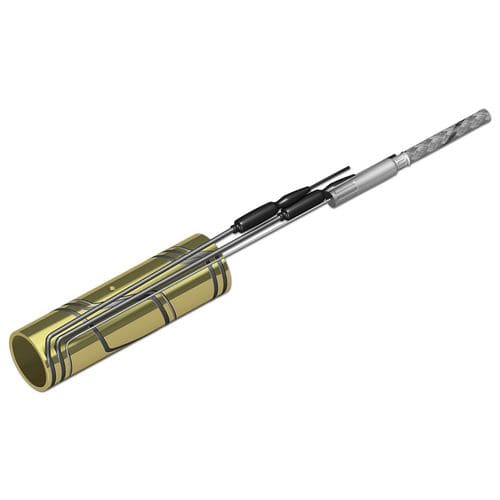
#Industry News
Homogeneous temperatures from a heating plate
The P-System by Hotset realizes individual surface heating plates for film technology
The issue of precise temperature control plays a central role in many film technology procedures. A particularly challenging part of the process is to generate even and homogeneous temperature fields over larger areas. This is important for example when thermoforming food packaging, processing shrink and stretch films or when welding films. The thermodynamics specialist hotset is now offering an ideal solution for this task with its new P-System heating plates.
The manufacturer hotset realizes project and customer-tailored design surface heater plates for thermal process flows concerning the handling and processing of plastic films for packaging technology. These complete solutions, designated P-Systems, are always optimally adapted in their design and configuration to the individual requirements of the machine and system manufacturers in the various areas of film and packaging technology. “The deep drawing of blister packaging or plastic trays, for example, places different requirements on the thermodynamics of heating plates than the welding of tubular bag films – using our P-System, we are able to react flexibly to any surface temperature control situation”, explains the CEO of hotset, Ralf Schwarzkopf. The decisive factor here is that the P-System surface heating plates offer an unusually precise and even temperature control which leads to exceptionally convergent and homogeneous temperature distribution across the surfaces of packaging films. This is what makes surface heating plates by hotset stand out from other, conventional plates. For the user – for example on a blister packaging machine – this means a higher level of process reliability; also for all downstream handling and processing steps for film temperature control. “The advantages become particularly apparent during thermoforming, during hot pressing or when welding and sealing films”, explains Ralf Schwarzkopf.
Lighter, thinner, safer
During the procedure referred to here by the hotset CEO, the homogeneous temperature distribution of the P-System surface heating plate results in extremely even film wall thicknesses, which reduce the weight differences on the end product to a minimum. In addition – for example during deep drawing – thinner films can be used which saves resources, and unattractive striations on packaging materials can also be avoided. A further advantage during the handling and processing of complex composite films is that the use of an appropriate P-System heating plate will prevent any damage to sensitive function layers.
The advantages of the P-System surface heating plates for process reliability and the high quality of new products can also be estimated in specific figures. Practice-based measurement series all reached the same conclusion: the temperature values on film heated by hotset surface heating plates fluctuated minimally across the entire temperature control area. Characteristic for the system were punctate deviations on the film of two degrees Celsius at most! In contrast, the surface temperature differences on conventional standard heating plates extended up to 15 °C. The P-System is the perfect solution for all device and system manufacturers for whom precise and homogeneous surface heating represents a decisive process step in their technical process (for example in vacuum machines or in film welding equipment).
Maximum individualization
The customer-specific design of the P-System surface heating plates by hotset extends to almost all its components. From the design of the heat transfer plate – which later contacts the film web more or less directly during the process – via the selection of the heating element (hotflex® tubular heating elements, hotform® silicone mat and much more) and the insulation plate, or the question of whether an additional installation space plate is required – all design levels of a P-System solution are aligned to customer-specific application cases. The design of the top cover plates with their plug-in contacts and fastening elements for installation into customer systems is also tailored individually to suit. Furthermore, sensors can be integrated to protect against excessively high temperatures, and hotset even displays great flexibility regarding the plate coating: functional surfaces with antistatic, non-stick and aseptic properties can be realized as well as coating offering increased wear, abrasion and corrosion protection. “Within the scope of our P-System, we can also structure and mold the surfaces of our customer-tailored surface heating plates. In addition, we are able to take special requirements on sliding, surface hardness, chemical resistance, electrical conductivity and easy cleaning properties into account”, adds the CEO of hotset, Ralf Schwarzkopf.
The connection voltages of the P-System surface heating plates range from 12 to 400 V and the performance density up to 15 W/cm2. Hotset provides each heating plate as a plug-in and ready-to-install unit, and also aligns the control and connection technology as well as the mounting technology to customer specifications.






